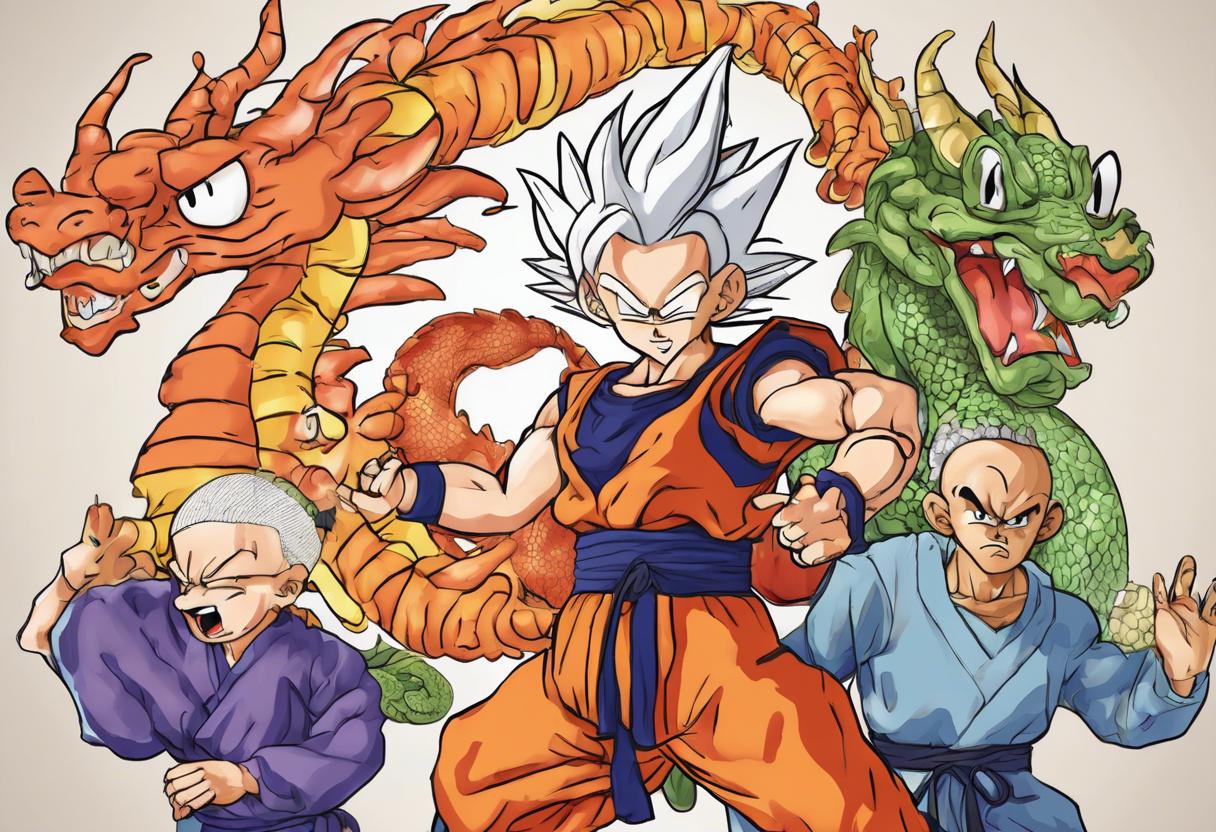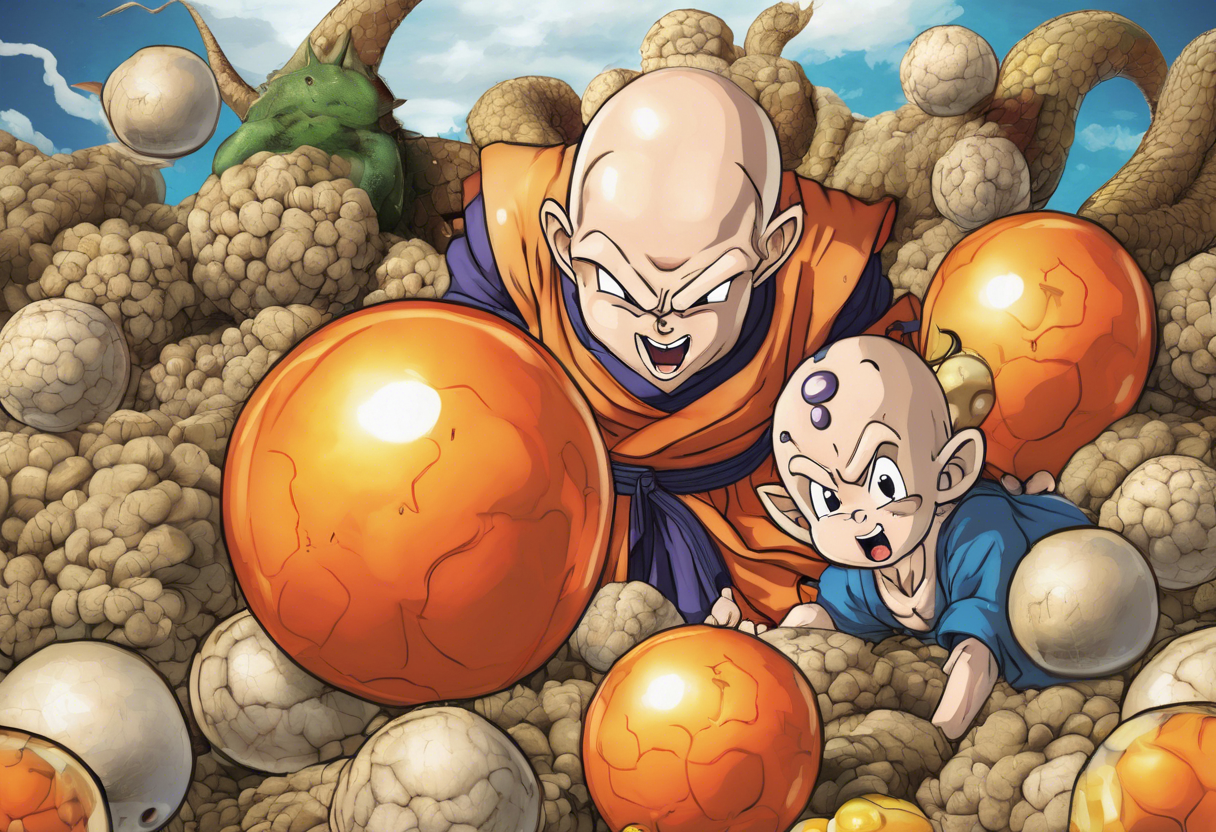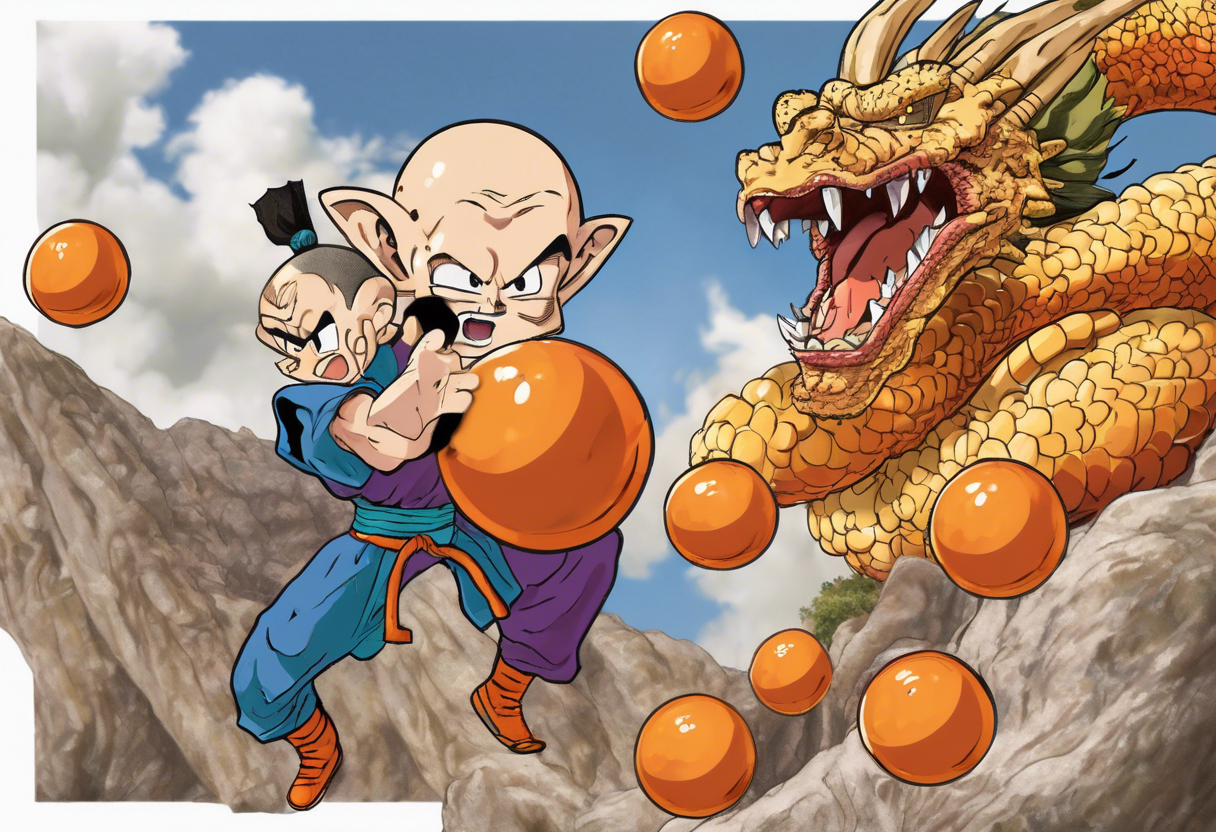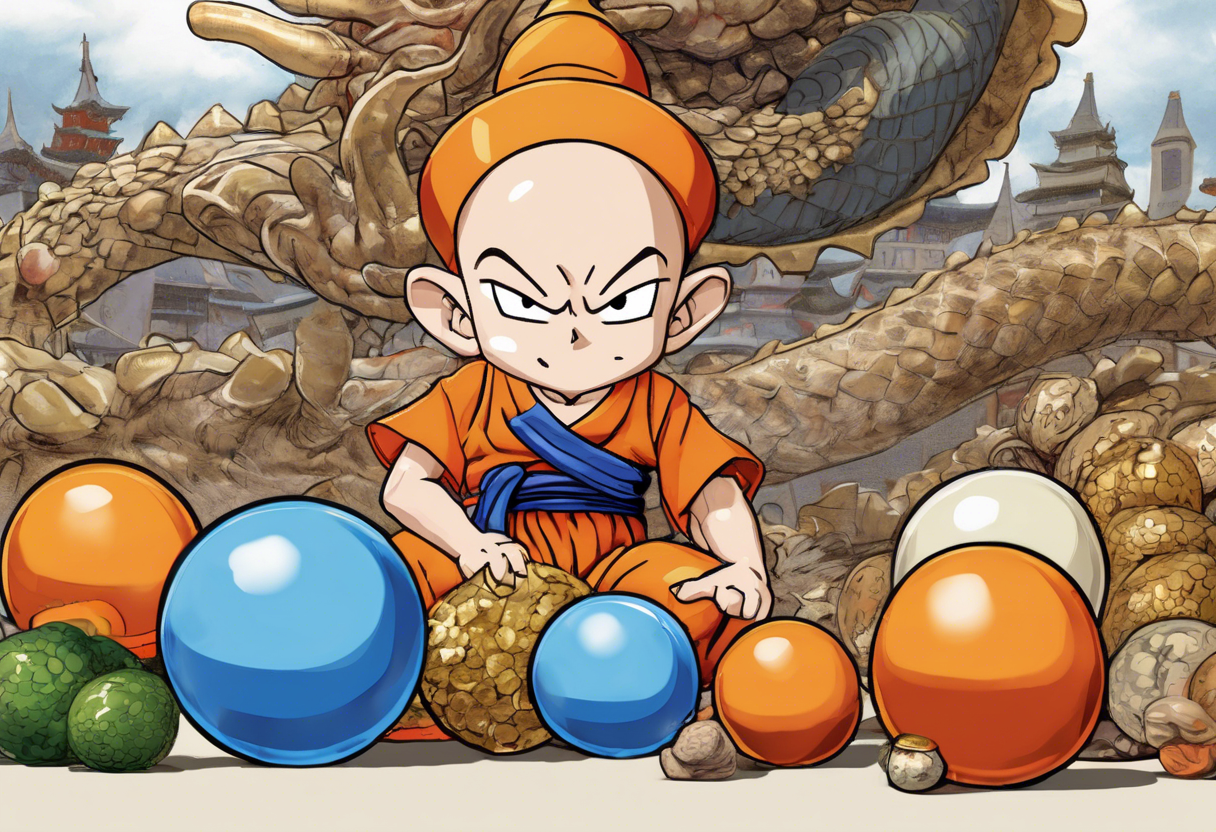Contents
Pilaf and the Dragon Balls: The Foundational Arc of Dragon Ball
Introduction
The "Emperor Pilaf Saga" or "Pilaf and the Dragon Balls" is the inaugural arc of the beloved anime and manga series Dragon Ball, created by Akira Toriyama. This saga sets the stage for the entire Dragon Ball universe, introducing key characters, themes, and the central plot device of the Dragon Balls. Produced by Toei Animation, the anime adaptation premiered as part of the larger Dragon Ball series, which is known for its blend of martial arts, adventure, and fantasy elements.
The production of Dragon Ball involved several key creative figures, including director Minoru Okazaki and producer Tokizō Tsuchiya. Akira Toriyama, the original manga author, played a crucial role in ensuring the anime stayed true to the spirit of his work. The first episode of Dragon Ball aired in 1986, marking the beginning of a franchise that would become a staple of Japanese pop culture.
What sets Pilaf and the Dragon Balls apart is its unique blend of humor, action, and heart. This arc lays the groundwork for the series’ signature mix of intense martial arts battles, whimsical characters, and epic quests, distinguishing it within the anime genre.
Plot Summary
The "Emperor Pilaf Saga" spans the first 13 episodes of the Dragon Ball anime and introduces the main protagonist, Son Goku, a young boy with a monkey tail and extraordinary abilities. Goku’s journey begins when he meets Bulma, a brilliant inventor searching for the seven Dragon Balls. These balls, when gathered, can summon the Eternal Dragon, Shenron, who can grant any wish.
The saga revolves around the quest for the Dragon Balls, with various characters joining or opposing Goku and Bulma. One of the primary antagonists is Emperor Pilaf, a comical yet sinister figure who seeks to use the Dragon Balls to become the ruler of the world. Pilaf is aided by his loyal but bumbling servants, Mai and Shu.
Key events include Goku’s encounters with other significant characters such as Oolong, a shape-shifting pig; Yamcha, a powerful martial artist; and Puar, Yamcha’s shape-shifting cat companion. The group faces numerous challenges, including battles against Pilaf’s forces and other adversaries, while also exploring the world and uncovering the secrets of the Dragon Balls.
A pivotal moment in the saga is when Goku transforms into a Great Ape during a full moon, causing destruction and chaos. His friends must find a way to revert him back to his normal form, highlighting the bonds of friendship and teamwork that are central to the series[5].
Themes and Symbolism
The "Emperor Pilaf Saga" explores several central themes that are characteristic of the Dragon Ball series. One of the most prominent themes is the power of friendship and camaraderie. Goku and his friends work together, support each other, and overcome challenges through their combined efforts. This theme is symbolized through their shared adventures and the sacrifices they make for one another.
Another significant theme is the pursuit of power and its consequences. Emperor Pilaf’s relentless quest for the Dragon Balls to gain ultimate power serves as a cautionary tale about the dangers of ambition and greed. This is contrasted with Goku’s innocent and pure-hearted desire to help others, highlighting the importance of intentions and motivations.
The Dragon Balls themselves are symbolic of the ultimate goal or dream that characters strive for. They represent the idea that with great power comes great responsibility and that wishes, once granted, may not always lead to the desired outcomes.
The saga also touches on the theme of growth and self-discovery. Goku, in particular, learns valuable lessons about his abilities, his friends, and the world around him. This arc sets the stage for his future development as a character and a warrior[2].
Cultural Impact
The "Emperor Pilaf Saga" had a significant cultural impact upon its release. It introduced audiences to a unique blend of action, comedy, and adventure that captivated viewers of all ages. The series quickly gained popularity in Japan and later worldwide, contributing to the global spread of anime.
The saga’s influence can be seen in various aspects of popular culture. Characters like Goku and Emperor Pilaf have become icons, referenced and parodied in numerous other anime, manga, and media. The concept of the Dragon Balls has inspired similar plot devices in other series, demonstrating the enduring influence of Dragon Ball on the anime genre.
The success of the "Emperor Pilaf Saga" also paved the way for subsequent arcs and series within the Dragon Ball franchise, including Dragon Ball Z, Dragon Ball GT, and Dragon Ball Super. These series have continued to evolve the story and characters, maintaining a strong fan base and cultural relevance[4].
Critical Reception
Upon its release, the "Emperor Pilaf Saga" received positive reviews for its engaging storyline, memorable characters, and blend of humor and action. Critics praised the series for its ability to balance lighthearted moments with more serious themes, making it appealing to a broad audience.
Over the years, the saga has continued to be well-regarded by both critics and fans. It is often cited as one of the best introductory arcs in anime, effectively setting up the larger universe and characters. However, some critics have noted that the pacing and animation quality, by modern standards, may seem dated compared to more recent anime productions.
Despite any criticisms, the "Emperor Pilaf Saga" remains a beloved part of anime history, celebrated for its contribution to the genre and its enduring popularity[2].
Legacy
The "Emperor Pilaf Saga" has left a lasting legacy in the world of anime and beyond. It has inspired countless other series and creators, influencing the development of action-adventure anime. The characters and storylines introduced in this arc continue to be referenced and homaged in various forms of media.
The saga’s impact on the Dragon Ball franchise is immeasurable. It laid the foundation for what would become one of the most iconic and enduring anime franchises, with a global fan base and numerous adaptations, including films, video games, and merchandise.
In cinematic history, the "Emperor Pilaf Saga" stands as a pivotal moment in the evolution of anime, marking the beginning of a genre that would captivate audiences worldwide. Its influence can be seen in many subsequent anime series, and it continues to be celebrated by fans and critics alike for its innovative storytelling and memorable characters[3].
References
- https://www.youtube.com/watch?v=xlXJCyYjQ2Y
- https://connorjnagi.wordpress.com/2017/01/09/dragon-ball-emperor-pilaf-saga-review/
- https://dragonballforums.com/threads/dragon-ball-anime-series-plus-movies-in-chronological-order.1910/
- https://poggers.com/blogs/anime/dragon-ball-universe-full-series-plot-summary-recap-original-z-gt-super
- https://en.wikipedia.org/wiki/List_of_Dragon_Ball_episodes







